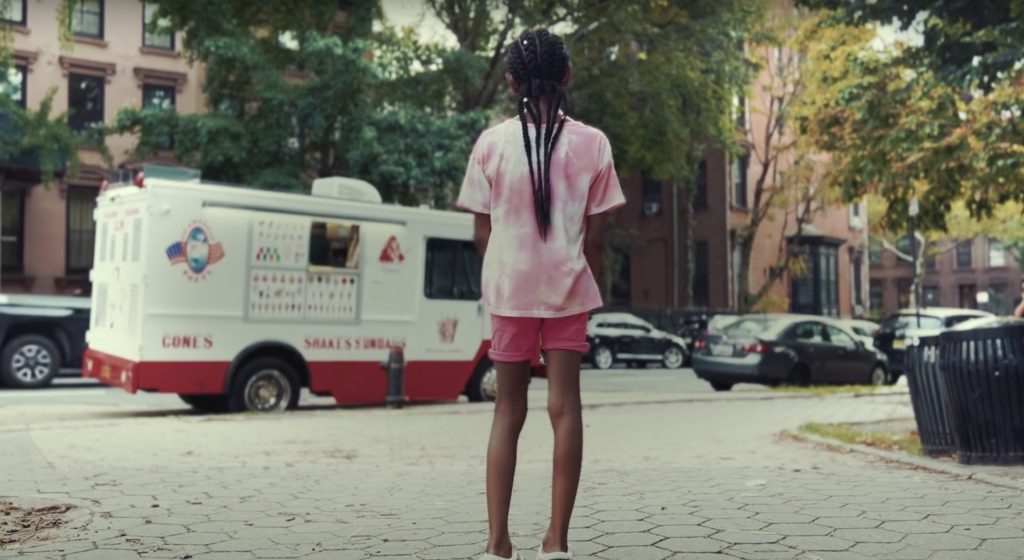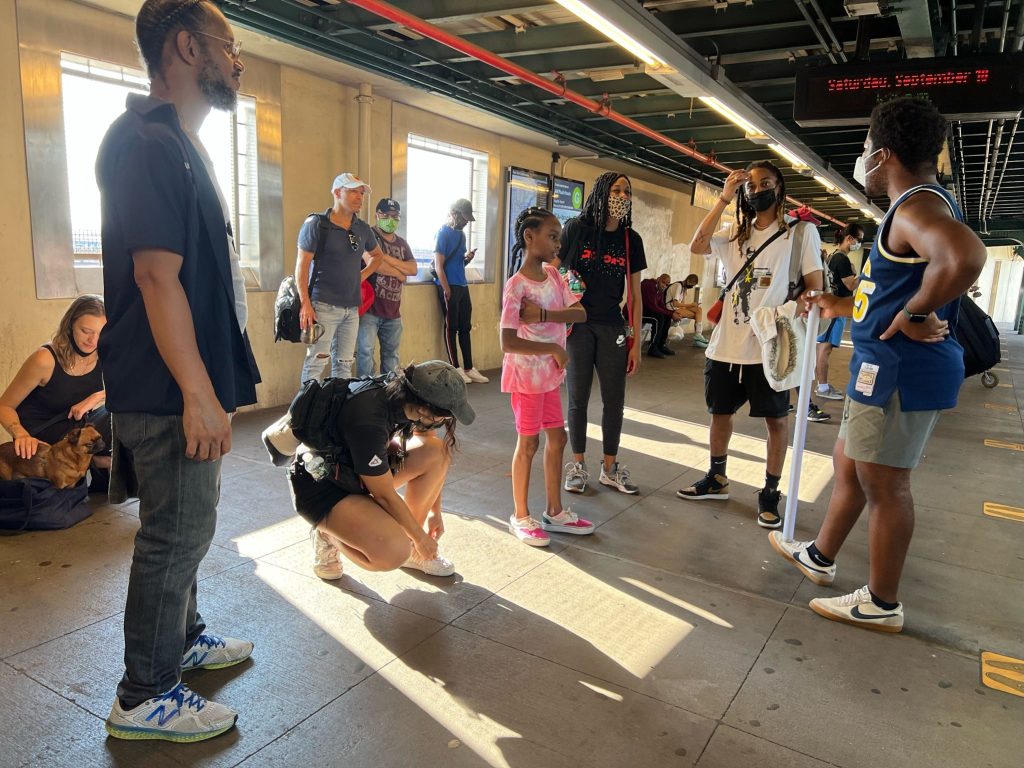Aundre Larrow’s “Float,” Shot Entirely on an iPhone 13 Pro
We speak with the photographer and filmmaker about his stunning debut short film

There is a sense of being awash with sensations when watching Aundre Larrow‘s short film “Float.” Shot entirely on Apple’s new iPhone 13 Pro, “Float” is a story of a father and daughter’s journey that manages to shape-shift emotionally and temporally as it unfolds. In all its two minutes and 34 seconds the film feels immediately impactful. To craft such a beautiful and moving story within such a short time and on an iPhone is a feat, but especially so given that this is Brooklyn-based photographer Larrow’s filmmaking debut—a fact that the short’s phenomenal execution would never reveal.

Typically known for his captivating and truthful portfolio of portrait, street and commercial photography, Larrow has always loved film, which—as he recently realized—actually influenced him to be a photographer. This passion began with television when he moved to America from Kingston, Jamaica at a young age. “There’s a lot of pop culture things that I learned just by watching TV,” he tells us. “I think that’s a very universal thing for a ton of immigrants or just people wanting to learn English.” While this passion for TV led him toward photography (and is perhaps in part why his photos center storytelling, be it the voting disenfranchisement seen in “Blocked from The Ballot” or the tales of immigration in “Nation of Newcomers“), film was still integral and, like a slow-burning romance, built its way over time.
“I’ve always felt a lot of anxiety about making films. I didn’t know if I could actually do it. I think it stems from that thing about photographers, videographers and filmmakers being on a lower art spectrum than painters or sculptors. So I felt a lot of anxiety,” Larrow continues. Still, he loved to watch films; fascinated with characters’ entrances and exists, he would rewatch those scenes until eventually, his dedication to motion pictures won out over fear. Larrow, purposefully seeking out photography gigs on commercials, studied the set, its people and how to capture movement. After dabbling in small video projects here and there, “Float” finally came to fruition.

“The word float comes from that phrase, ‘Can you float me some money?'” the filmmaker explains. “I think about how, when we first moved here, my mom used to take care of this old man named Mr Fox. At night, she was getting some remaining credit on her Bachelor’s degree so she could teach in America. And then on weekends, she was working at Motorola, putting together phones. So there wasn’t all the time in the world to go on vacations or long trips or stuff… So that’s why there’s that rush in the beginning of ‘Float.’ When you get to the beach—that sense of relief when you get there.” This dynamic—between a working single parent whose time is limited and a child who counts down the seconds until the next excursion—manifests between the film’s young daughter Ruby (played by Cori Lynn Hendricks) and her father Dennis (played by Leo Coltrane).

In the opening scene, Ruby waits for Dennis by an ice cream truck in Fort Greene, Brooklyn. A sense of melancholy and nostalgia grip the frame, as an isolated Ruby watches kids enjoying their treats. But then the feeling of the film shifts. Dennis finally enters and the duo is off—hopping on the train, arriving at the beach and splashing around with laughter. That movement of emotion and tempo was deliberately crafted by Larrow who wanted to recreate the feeling from his own childhood.

Within each scene, there are layers of nuance at play. At the beach, for example, shots of the pair frolicking in the water are interspersed with waves undulating, and fisherman and foot traffic nearby, giving rise to a specific sense of chaotic, youthful joy. That all-important rush, though, is juxtaposed with moments of stillness, like when Dennis helps Ruby float in the water—another texturally measured moment.
“I wanted to make something that honored both how hectic it felt sometimes when I was a kid but also fully speaking to how amazingly peaceful and positive it was when my mom and I got those moments,” Larrow describes. “I think one of the points of this story is kind of coming to terms with what happens when mom’s not here. This was a way to acknowledge all the things that made me say ‘I love you’ and ‘Thank you’ to her. In my mind, the layers of my story are, ‘We’re here, we’re together. I couldn’t be me without you.’ And now ‘I have to figure out what my motivations are without you.'”

Once the film was conceptually set, production wasn’t hindered by working with a phone in place of a camera. In fact, the medium paired well cinematically, which Larrow found to be a refreshing difference from photography and filmmaking circles often bogged down by gear talk. Most importantly, iPhones afford greater access to aspiring filmmakers. “There are hundreds of new kids and older people who are like, ‘I want to make a short, and I can make it on iMovie or other stuff,'” Larrow says. “If we get through that door, that level of access, then we might have the opportunity to make doors a little more open than it was when I was 14.”

Larrow continues, “The biggest thing, besides having the phone, was that I have people. Up to two years ago, I was uncomfortable with the idea of needing a lot of other people to make things. And I have fully stepped into realizing that I am not the master of the universe. And in not being the master of the universe, there’s a beauty in being able to admit you need help.” In many ways, “Float” is a celebration of all the people who had a hand in its creation.
Images courtesy of the Aundre Larrow












